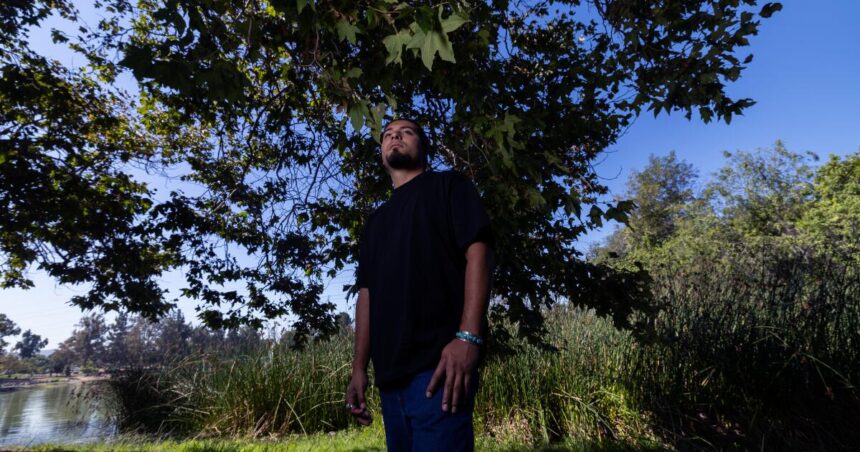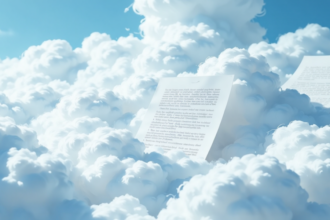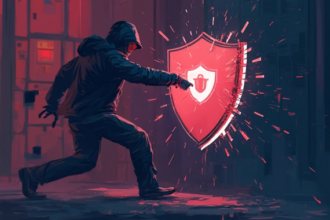I was appointed by Sheila Kuehl to serve on Los Angeles County’s first Youth Climate Commission in 2022. The bureaucracy was and will continue to be daunting. But I’ve learned that being a youth in the community is harder on big polluting companies than acting individually. I also understand that, as my mentor says, climate activism means “picking up a rake and being willing to get dirty, and you’re defending the land.” When community members like me tend the mulch, solutions are set in motion.
My passion for this work comes from my connection to the land and the lack of access to nature in urban areas. I’ve always believed that communities would thrive and social fabrics would be richer if we integrated the real environment into our planning. But our society prefers to create artificial zones and artificial ways of life.
I remember running to the San Gabriel River after football practice as a kid. It was the dry season so there was little water, fish were rotting with flies, and human waste and trash were floating on the surface of the river. Twenty years later, it still makes me sad to see the same scene. I still see tons of water going nowhere and the riverbed is covered with cement. I still hear people continue to lie about how Los Angeles is suffering from a water shortage.
If we rethink how we store water, there will be no shortages and no reason to import it. We are so careless about water because we don’t want to admit the mistakes of colonialism. It’s easier to dump water into the ocean than to admit that we didn’t know about the rain cycle in this city. Los Angeles had a landmark flood more than 80 years ago, and since then, those in power decided to cement everything and reroute the old waterways. We are still paying the price for their sins.
Some progress has been made. It should come as no surprise that living near active waste disposal sites, oil refineries, oil rigs, power plants, etc. can cause serious health problems. In 2022, a new law (Senate Bill 1137) was passed that would ban drilling new oil and gas wells within 3,200 feet of homes, schools, parks, and hospitals. The oil and gas industry tried to overturn it, but abandoned that effort in June.
There are many solutions to the climate problem, if we research and look around, we will see that it is not money that is the problem, it is our pride and laziness that is preventing us from restoring the balance of our ecosystems.
I see my role as undoing the colonialist acts that were planted to force an entire continent into genocidal acts in the first place. Acts that are still committed today may be the result of mindless submission, but they are still violent acts of settler colonialism. It is time for us to stop upholding such values and protect the entirety of humanity.
After all, the Earth will always swing us back to a balanced reality, whether it is beneficial to us or not. I am hopeful and happy that local governments are now negotiating with indigenous peoples to solve 100-year-old problems with 1000-year-old solutions. For example, firefighters are starting to work with local tribes to protect national parks by implementing cultural burns and species reintroductions.
Individuals and communities can take action: rooftop gardens on buildings can help increase heat release and absorb air pollutants throughout a community. Living wall concepts cool the air and provide an evaporative cooling effect. Green infrastructure offsets urban heat trapped in concrete and other uninhabitable materials.
I was involved with infrastructure as a solution to offset climate disaster after learning from other places around the world: the Colombian city of Medellin used green infrastructure and planted thousands of trees to reduce average temperatures by 2 degrees Celsius (3.6 degrees Fahrenheit) in just 10 years.
Don’t get me wrong, many of the solutions are specific to the location, but they can be inspirational even if they can’t be repurposed.
Humans are to blame for climate change. There should never be tornadoes in East Los Angeles, but here we are. The Earth will win. You have to decide what you are going to do to make it a safe place for young people.
Visual artist and storyteller Isaac Michael Ibarra is of Tongva, Chumash, and Chicano descent. Drawing from his ancestral culture, he uses film, photography, and poetry to spread postcolonial narratives and revive indigenous pedagogies. He graduated from California State University, Northridge, where he learned how to empower communities through coalition building and navigating red tape. Today, He is a Fellow with the California Creative Corps and the County Representative for District 3 on the Youth Climate Commission., He is producing a film anthology about undoing extinction in Los Angeles County, reflecting on the synergistic ecosystems that have thrived for millennia.









